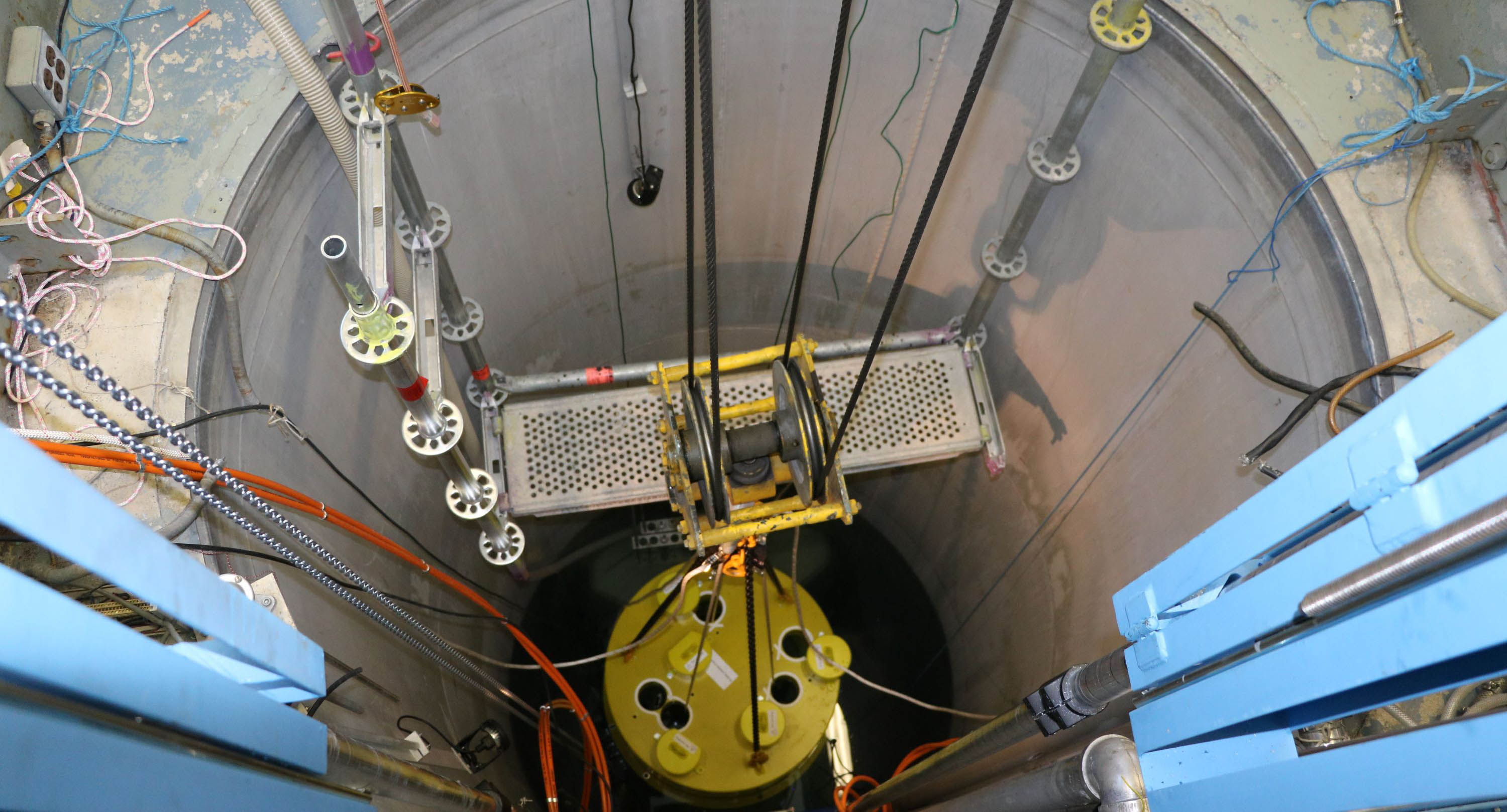Decommissioning of Finland’s first nuclear reactor started
Dismantling work related to the decommissioning of VTT Technical Research Centre of Finland' s FiR 1 research reactor began in Otaniemi, Espoo, in June 2023. Safety is the absolute starting point for the decommissioning. All measures related to dismantling work are carried out under the supervision of the Radiation and Nuclear Safety Authority (STUK).

FiR 1 (Finnish Reactor 1), Finland’s first nuclear reactor, was launched in Otaniemi, Espoo, in 1962. The reactor was a TRIGA Mark 2 pool-type reactor manufactured by General Atomics, USA. The research reactor, which has served research, teaching, radiation therapy and isotope production for decades, was shut down in June 2015. In June 2021, VTT received permission from the Government to decommission the reactor. As part of the licence processing, STUK assessed the safety of decommissioning.
The dismantling work began in June 2023 under the supervision of STUK. Fortum acts as the main contractor for VTT in the project and is responsible for the dismantling work, waste handling and final disposal. The dismantling has progressed according to plan and is expected to be completed during 2024.
Planned and radiation safe dismantling project
FiR 1 is the first nuclear reactor to be dismantled in Finland. A number of similar reactors have been dismantled elsewhere, for example, in Denmark and Germany, and the lessons learned from them are also being utilized in the dismantling of the Otaniemi reactor. Similarly, the lessons learned from FiR 1 can be used in the planning of the decommissioning of nuclear power plant reactors in Finland as well as in drafting related legislation in connection with the ongoing reform of the Nuclear Energy Act.
The research reactor with thermal capacity of 250 kilowatts is a small and safe nuclear power plant designed for educational use. Therefore, the amount and radioactivity of spent nuclear fuel and maintenance and dismantling waste generated is also relatively low. VTT returned the spent nuclear fuel from the research reactor to the United States at the end of 2020 and beginning of 2021. In the case of other waste management, the low- and intermediate-level waste generated during operation and from dismantling of reactor structures and systems must be taken into account. The reactor’s operational and dismantling waste, a total of approximately 60 cubic metres, will be disposed of at Fortum’s low- and intermediate-level waste final disposal facility in Loviisa.
"The old saying — well planned is half done — was true in this project. The decommissioning and dismantling of the research reactor was carefully planned, which meant that the implementation went safely and on schedule. From the authority’s point of view, VTT’s and Fortum’s expertise and transparency have greatly facilitated supervision. With regard to radiation protection, the dismantling work has been extremely successful, and the actual radiation doses of the employees have been lower than the estimates of radiation doses made during planning. Sufficient time was reserved for the work phases which were challenging in terms of radiation protection, and they were carried out without any rush," says Kai Hämäläinen, Senior Advisor at STUK.
Lessons learned for the future
The dismantling work began in June 2023 with dismantling of the reactor tank interiors. During the removal of the last major component of the interior, the reflector, on 9 August 2023, about 3 cubic meters of water leaked from the reactor tank onto the floor of the reactor hall. Based on the measured samples, the water contained small amounts of radioactive substances.
At the time of the incident, a representative of STUK was on a monitoring visit to FiR, so STUK was informed of the incident immediately. The hall had been prepared for various exceptional situations, including water damage, and all the water was recovered during the same day. Due to the low radioactivity of the water, the employees taking part in the dismantling work were not exposed to abnormal radiation, and neither radiation nor water was discharged outside the controlled area. The dismantling work was interrupted in order to clarify the exceptional situation. There was no risk of an accident or an environmental risk involved in the event.
The final dismantling work is the chiselling of activated parts of the bio-shields. After this, the site will be cleaned before taking the surface cleanliness measurements and releasing the site from supervision. There is still a large proportion of the dismantling waste on site, which will be transported to Loviisa for final disposal before the plant area can be released from supervision.
"The lessons learned from the decommissioning of the FiR 1 research reactor should also be kept in mind in the future when the decommissioning plans for the nuclear power plants currently in operation are updated the next time. In addition, waste handling and disposal solutions must be pre-planned so that they can be implemented smoothly at the dismantling site," Hämäläinen concludes.
Sources and more information
- VTT website: Decommissioning of the FiR 1 nuclear reactor
- VTT website: Water leakage in reactor hall during dismantling of research reactor
- Ministry of Economic Affairs and Employment of Finland's website: Dismantling of FiR 1 research reactor to start in June 2023